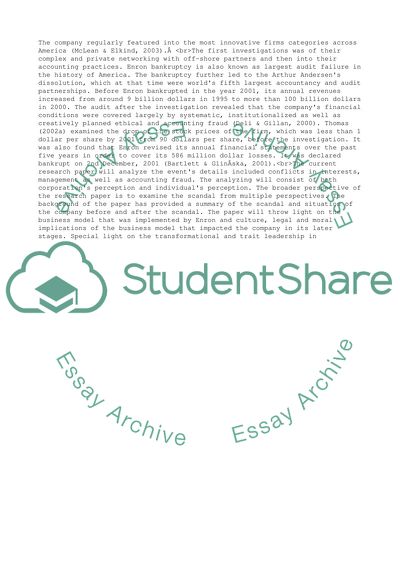Cite this document
(“Enron Research Paper Example | Topics and Well Written Essays - 5000 words”, n.d.)
Enron Research Paper Example | Topics and Well Written Essays - 5000 words. Retrieved from https://studentshare.org/business/1652976-enron
Enron Research Paper Example | Topics and Well Written Essays - 5000 words. Retrieved from https://studentshare.org/business/1652976-enron
(Enron Research Paper Example | Topics and Well Written Essays - 5000 Words)
Enron Research Paper Example | Topics and Well Written Essays - 5000 Words. https://studentshare.org/business/1652976-enron.
Enron Research Paper Example | Topics and Well Written Essays - 5000 Words. https://studentshare.org/business/1652976-enron.
“Enron Research Paper Example | Topics and Well Written Essays - 5000 Words”, n.d. https://studentshare.org/business/1652976-enron.


